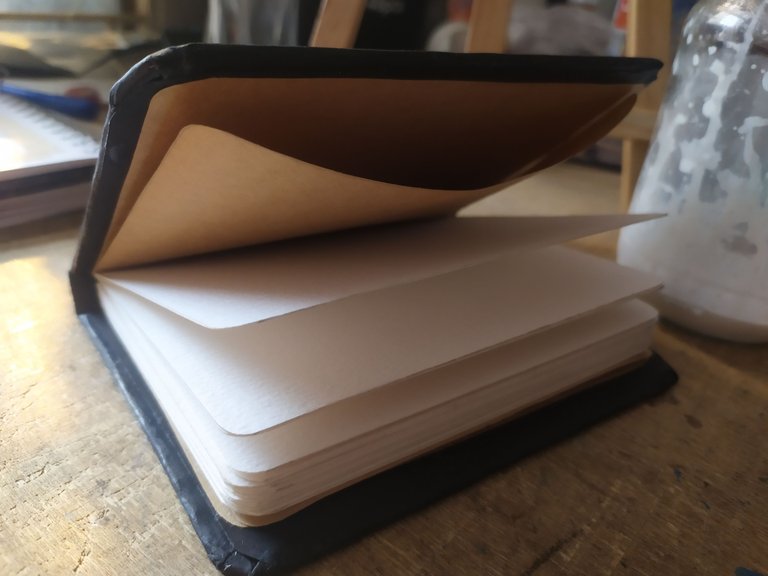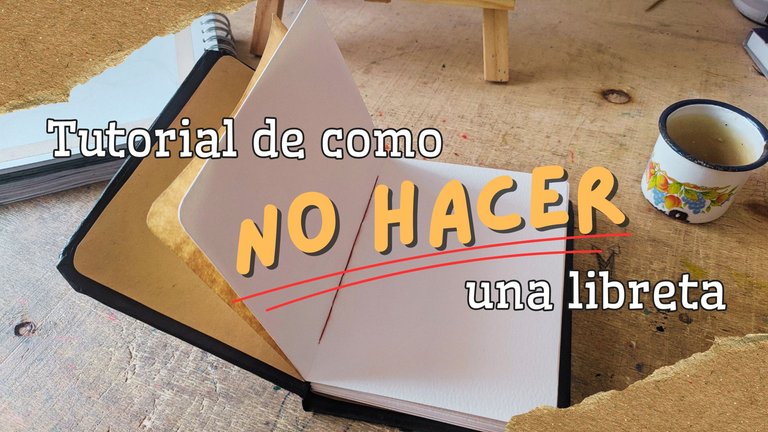
Tenia unos papeles de acuarela que no estaban haciendo nada con su existencia por lo que se me ocurrió transformarlos en una pequeña libreta, y ¿como lo haría? pues acompáñame a ver este tutorial NO tutorial del proceso.
I don't know how often this happens to you but for me, every time I start to organize and clean the workshop I spend my whole life getting distracted by every little thing and detail I have there. And on this last cleaning day an idea came to me.
I had some watercolor papers that weren't doing anything with their existence so I thought of transforming them into a little notebook, and how would I do it? Well, come with me to see this tutorial NOT tutorial of the process.
Paso 1: No confíes en tu memoria
Step 1: Don't rely on your memory
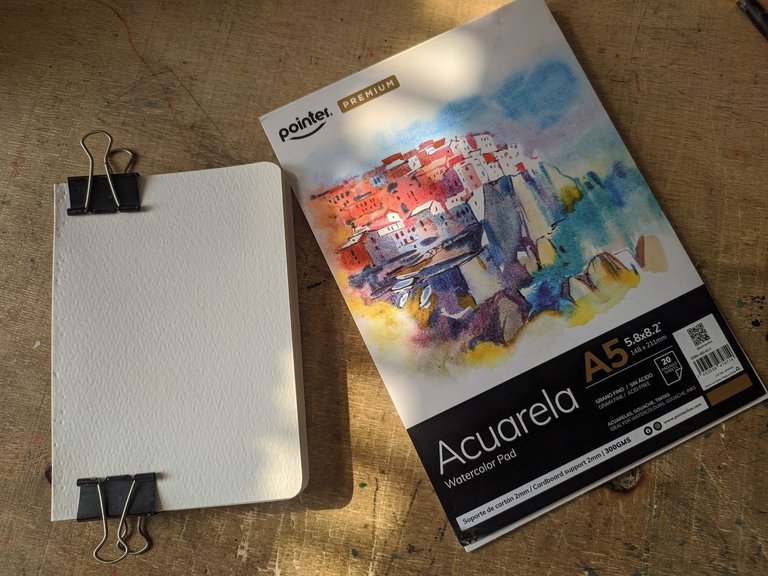
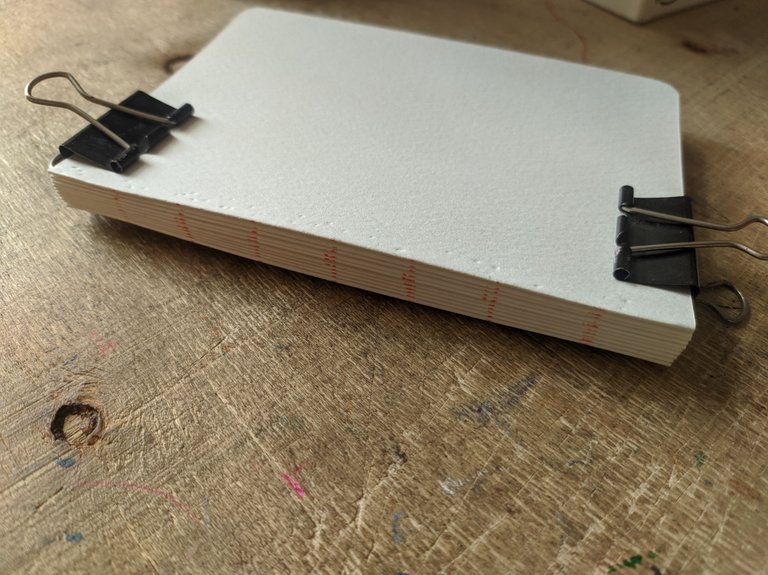
La idea es hacer una libreta cosida, entonces el primer paso fue ponerme a doblar las 10 hojas de cartulina acuarelable que me quedaban en el block. Cuando se trabaja con hojas de papel como tal se deben armar cuadernillos (grupos de cuatro hojas aproximadamente), en este caso no lo haría de esa manera porque el grosor de la cartulina no me permitía andar juntando varias hojas a la vez.
When I get excited about an idea I take advantage of that first hour where I want to materialize quickly what I have in my head, however, in this frenzy I can overlook certain details. And I say “wild” to exaggerate but I can easily say overconfidence in my abilities or laziness to look for information that “I already know”.
The idea is to make a sewn notebook, so the first step was to fold the 10 sheets of watercolor cardboard that I had left in the pad. When working with sheets of paper as such, you have to make booklets (groups of four sheets approximately), in this case I would not do it that way because the thickness of the cardboard did not allow me to fold several sheets at the same time.
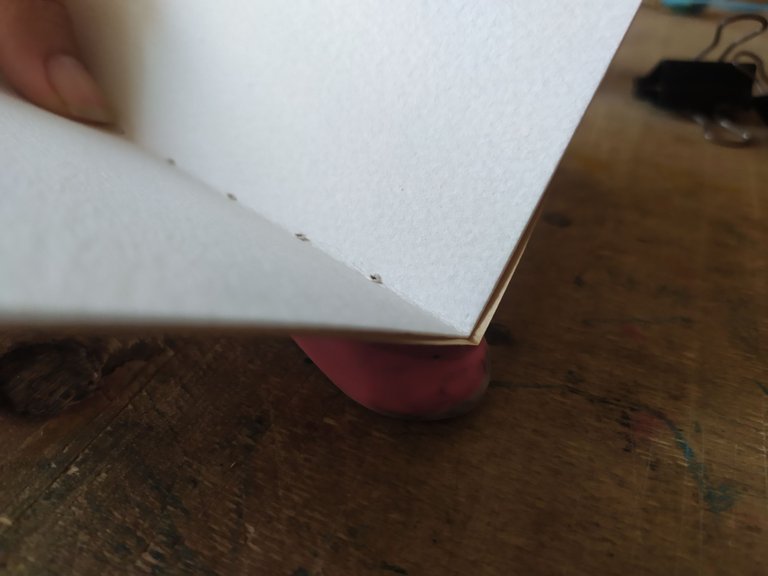
Now the next thing to do is to make the holes where the thread is passed to sew. Here it is advisable to leave two centimeters distance from the edges and one and a half in the others, the important thing here is to make a number of holes in even numbers. But, as I do not follow my advice I started to make all those holes at random, the result, I had an extra one.
Paso 2: Resolver
Step 2: Resolving
Fueron cinco minutos y medio que termine repitiendo un par de veces hasta comprender este tipo de encuadernación que me serviría para resolver mi pequeño problema, que por cierto te lo comparto para que puedas verlo.
Yes, I now had an odd number of holes and from what I remembered of how to sew a notebook I was lost. I had wasted 10 sheets of watercolor cardstock that I could have used for illustrations. That was my thought in the first few minutes of the drama, but I turned to the wise YouTube and there I found a video from the Take a smile scrap channel titled Binding 03-Stitching chain stitch.
It was five and a half minutes that I ended up repeating a couple of times until I understood this type of binding that would help me to solve my little problem, which by the way I share it with you so you can see it.
Paso 3: Que no se te enreden los hilos
Step 3: Keep your yarns tangle-free
After watching the video and being enlightened by the solution presented by the chain stitch, it was time to start joining all these sheets of the notebook.
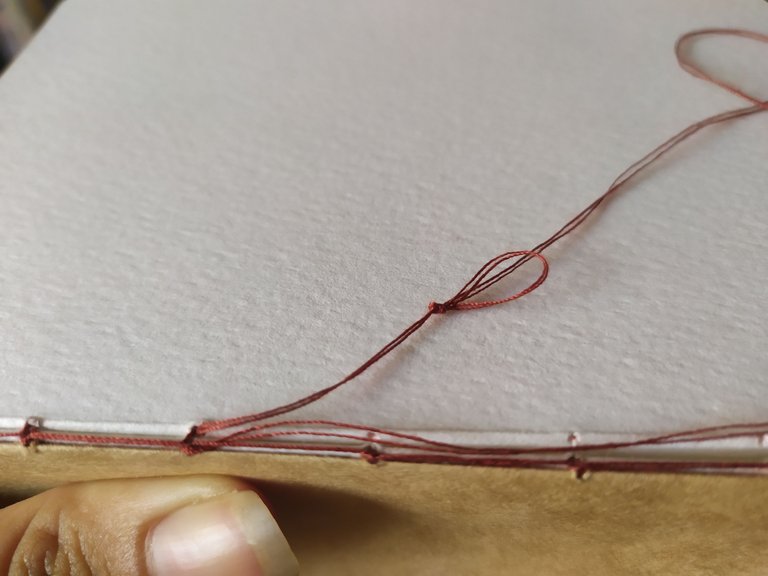
I couldn't tell you exactly how much thread you should cut to sew the notebook, it's more by eye per cent. What does happen is that you should try to stretch the thread well to avoid tangles as much as possible, especially if you have little patience like me. Every now and then I had to go around disassembling knots that are created when the thread is long.

This process is not so complicated, but it is good to pay close attention to each step and especially at the moment of joining sheet to sheet where you must adjust the thread to avoid that the whole seam of the notebook is loose.
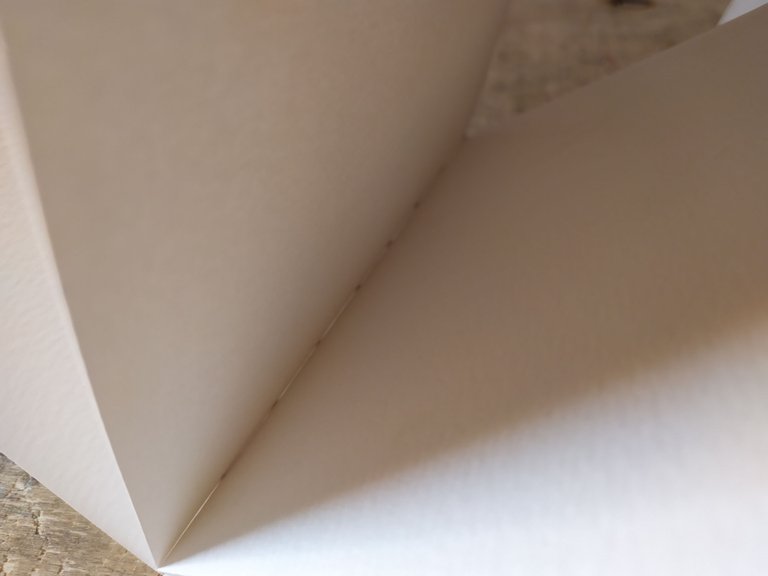
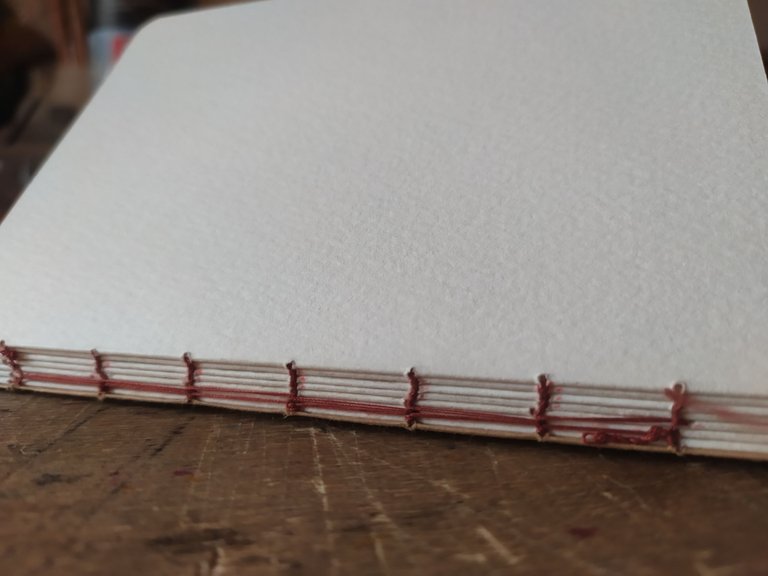
Paso 4: Hora de darle forma
Step 4: Time to shape it
Now I was 60 percent of the way to finish the notebook that was taking me so much time and effort, but before moving on to the cover I decided to put a layer of glue on the pages so that everything would be more fixed.
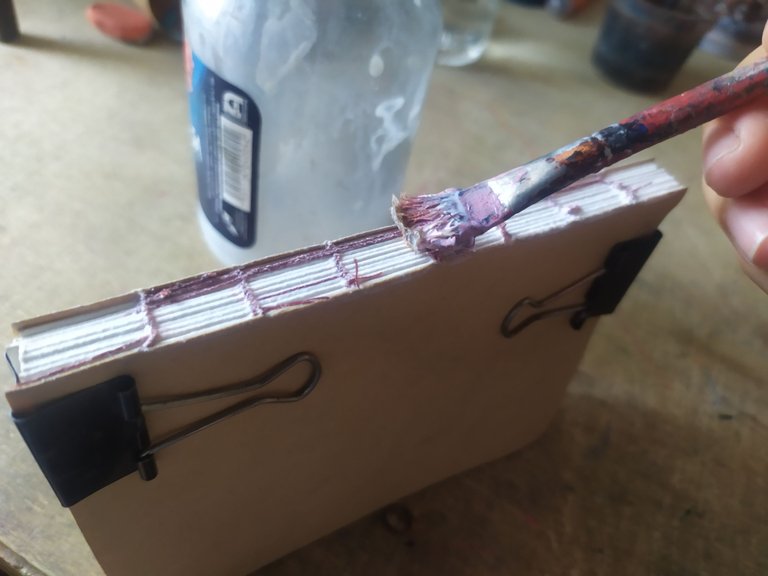
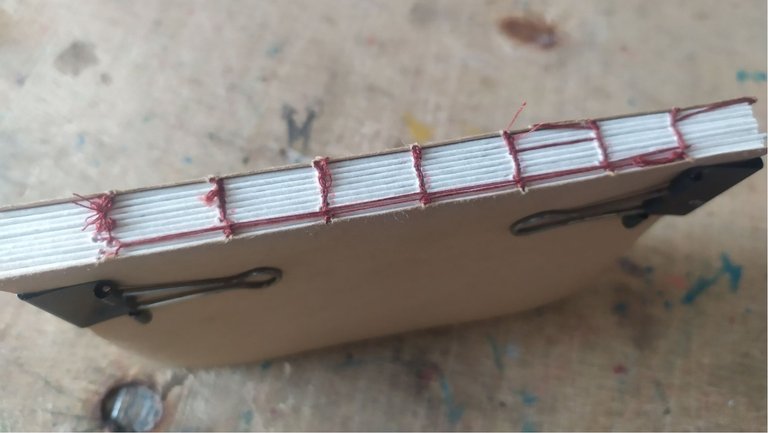
Before continuing with the other step I had to take into account a certain detail that I did to the leaves because I thought it would look “prettier” at the end.
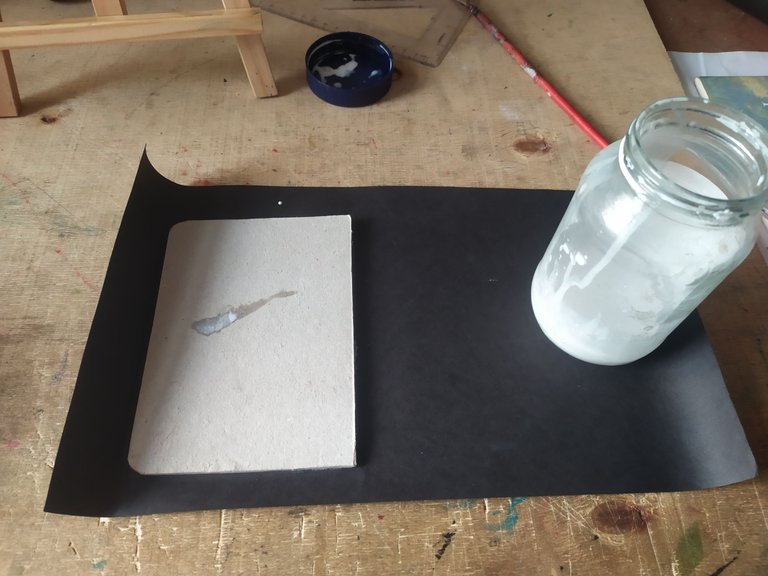
Now I cut two pieces of cardboard for the covers, adding half a millimeter on each side. I should have also cut a thinner one for the spine of my notebook that would be the thickness of the pages in total, however as I was going to cover it with a thick cardboard I didn't see the need to do it, so I skipped that step and went straight to gluing.
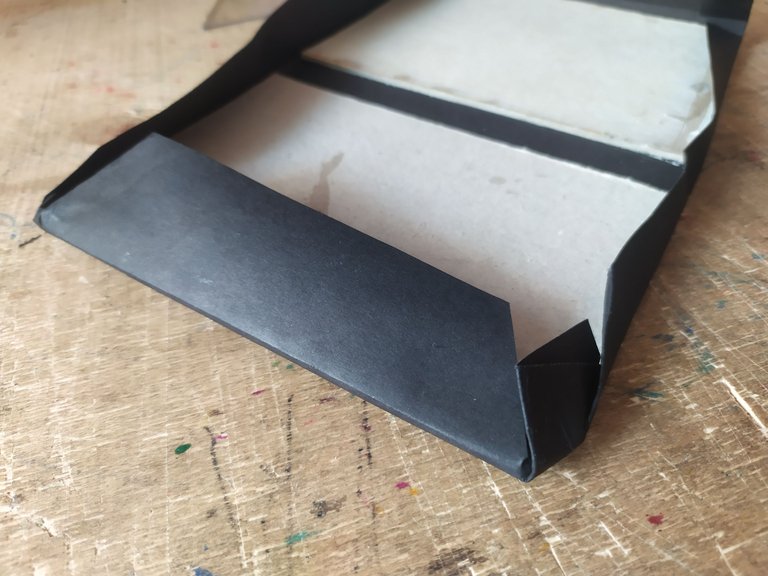
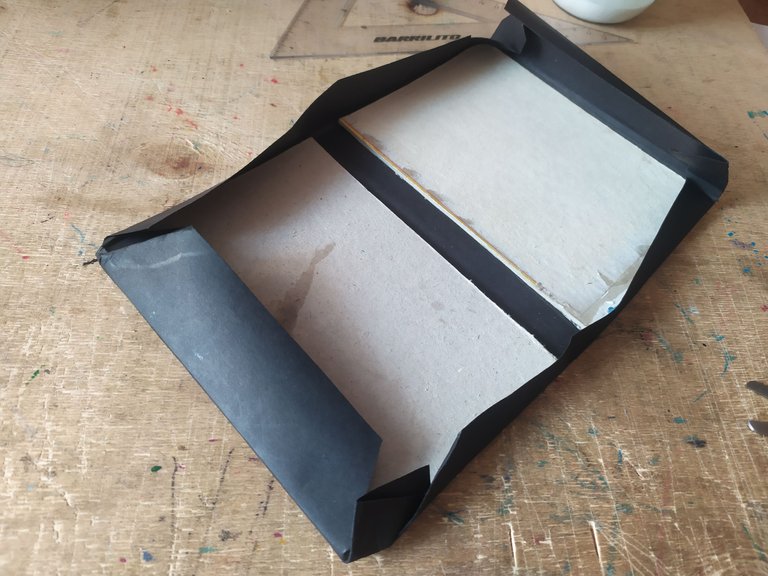
Paso 5: Papeles por todas partes
Step 5: Papers everywhere
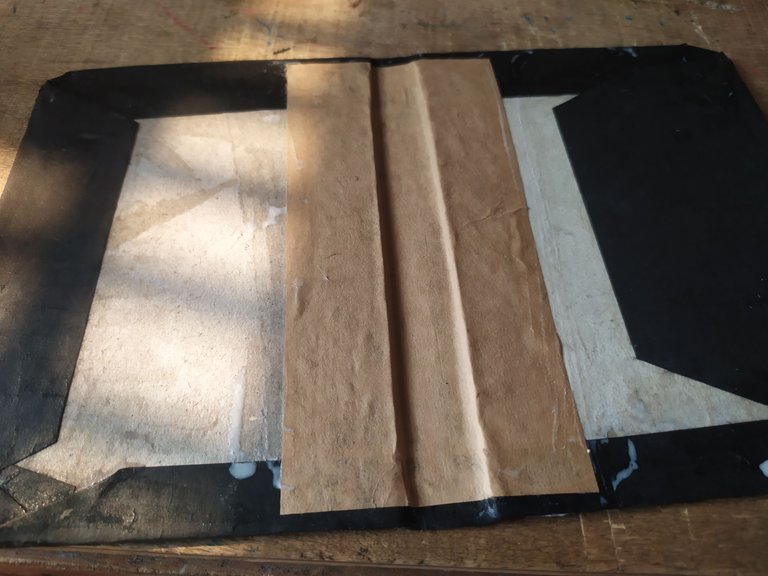
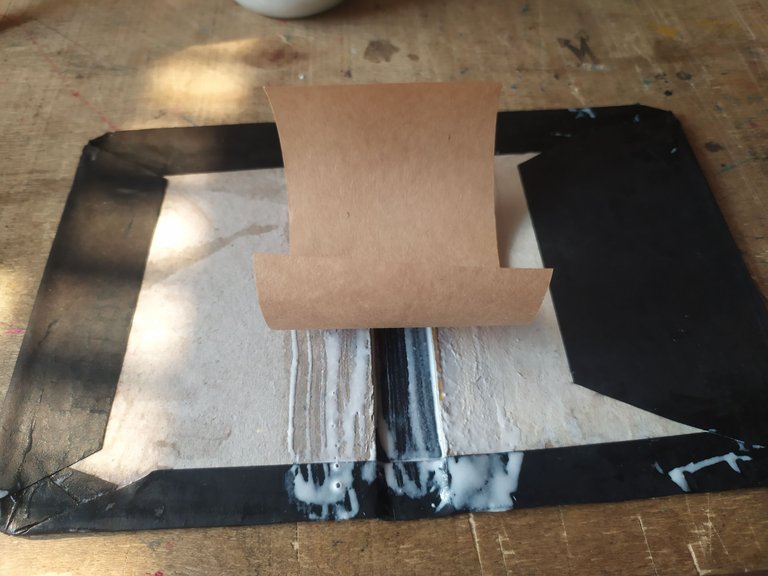
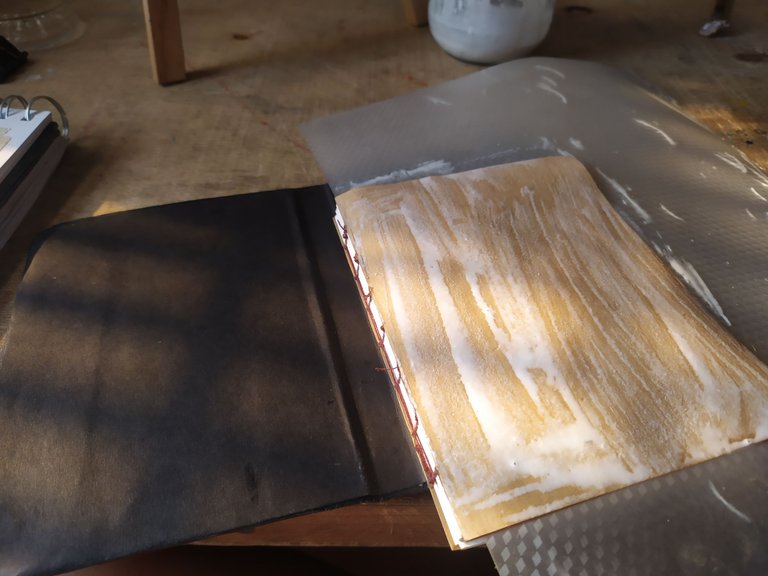
Después de pegar las esquinas redondeadas que son un ocho y de cubrir con cartulina negra por todas partes, procedí a unir las hojas con la portada (Las dos al mismo tiempo).
Here I spent a lot of time sticking papers all over the place. I could easily call it the Frankenstein notebook because it had so many patches.
After gluing the rounded corners that are a figure eight and covering with black cardboard all over, I proceeded to attach the sheets to the cover (both at the same time).
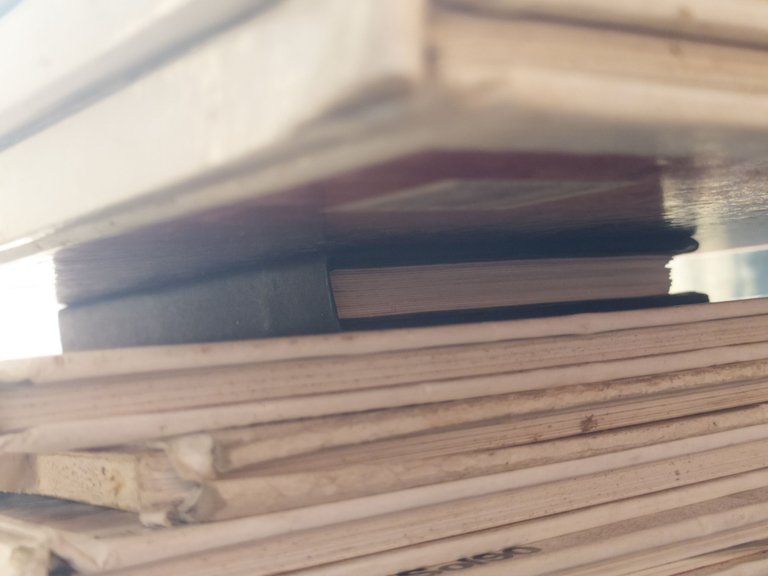
Of course, weight is put on top so that everything sticks well and it is left there until the next day.
Paso 6: ¡Felicidades, ahora tienes una libreta!
Step 6: Congratulations, you now have a notebook!
Yes, after so many shortcuts, we reached the expected result, which was to get a small notebook of watercolor sheets.
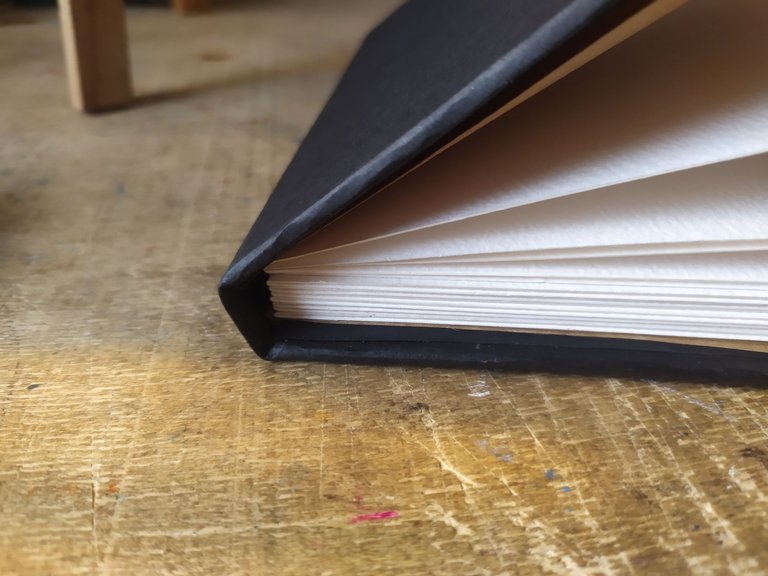
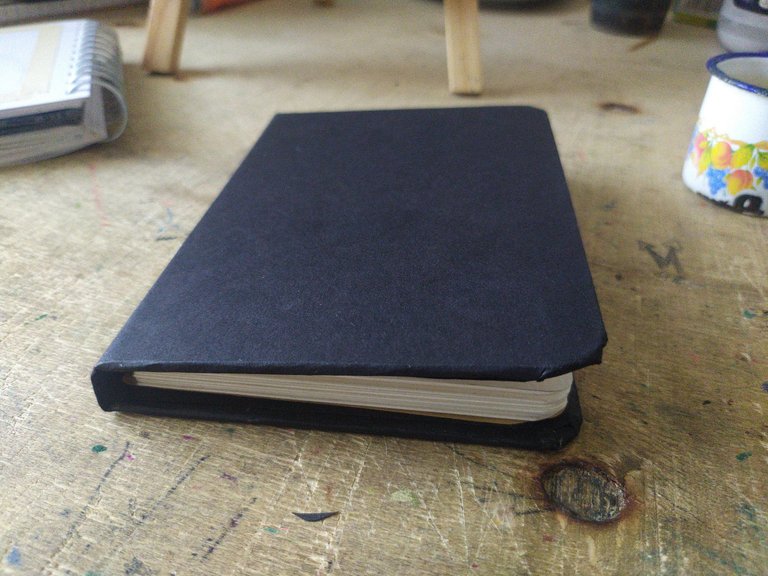
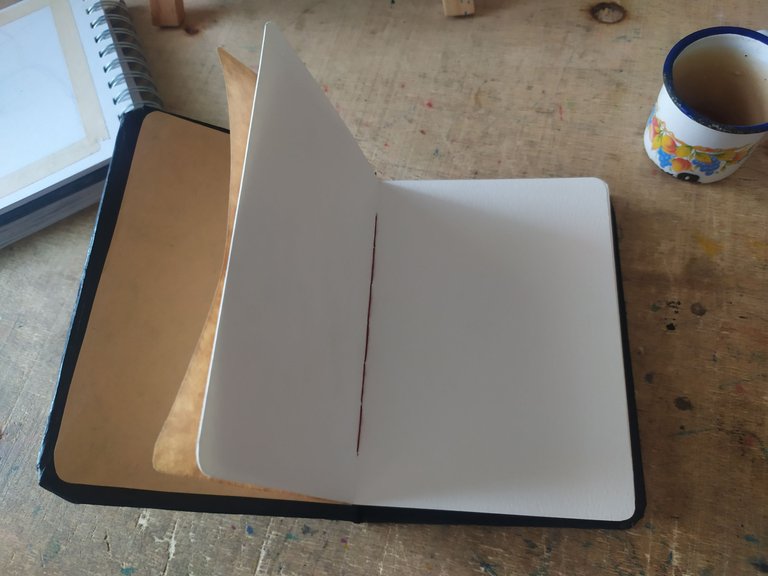
The notebook has its details, for example I had to sew it with a white thread so that it doesn't visually get in the way when opening the pages or also the way I glued the cover that made it less open on one side, but all in all I'm happy with the result.
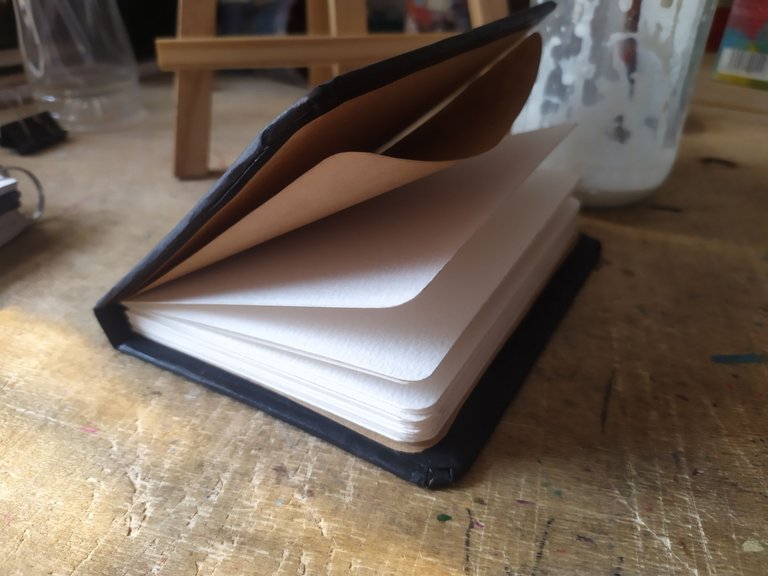
Despite all the stumbles I had to make this notebook I really enjoyed the process. Yes, I understand that I could have taken a trip to a YouTube video to refresh the knowledge that is stored there in my memory, but thanks to that I can share with you this way of how not to make a notebook.
All the photographs shown here are of my authorship and were taken from a Xiaomi Redmi note 7 phone. The cover image was created in Canva.

Espero llenar estas hojas de mis aventuras viajeras y si es así, te lo compartiré luego, mientras tanto chao.
I hope to fill these pages with my travel adventures and if so, I'll share it with you later, in the meantime bye.
